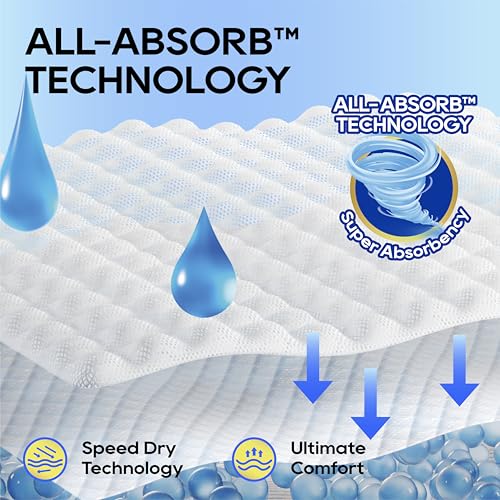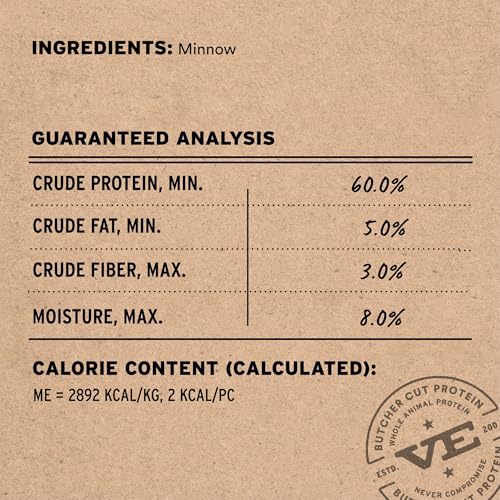Purina Fancy Feast Gravy Lovers Poultry and Beef Grilled Gourmet Wet Cat Food Variety Pack - (Pack of 30) 3 oz. Cans
$25.74 ($0.29 / ounce) (as of November 30, 2025 04:06 GMT +00:00 - More infoProduct prices and availability are accurate as of the date/time indicated and are subject to change. Any price and availability information displayed on [relevant Amazon Site(s), as applicable] at the time of purchase will apply to the purchase of this product.)HONEY CARE All-Absorb A26 Male Dog Wrap, 50 Count, Small
20% OffParasites in dogs are not only annoying but also dangerous – both for the dog and also for you as many parasites are also infectious to humans. It is therefore extremely important for humans and animals must are free from parasites. We will show you what types of parasites there are in dogs, how they can be detected (diagnosis of parasites) and what forms of treatment are possible.
In addition, many parasites are carriers of pathogens (for example, bacteria or viruses) that can cause serious illnesses in your four-legged friend.
Parasites that mostly feed on your dog’s blood can also lead to so-called anemia (in the case of severe, permanent infestation).
Some parasites can also be transmitted from dogs to humans and also cause serious diseases in humans, zoonoses is another infectious disease that can be transmitted reciprocally between humans and animals. These infectious diseases can be caused by parasites, bacteria, viruses, fungi, or prions.
Some parasites (such as mites and fleas) can be transmitted directly from dog to dog. Other parasites (or their eggs/larvae) are excreted, for example, through the feces and transmitted to other animals through contact (or eating of these feces). In some cases, parasites can also be transmitted via (biting) mosquitoes. Some parasites also need so-called “intermediate hosts” (i.e. other animals) in which they can develop before they can infect their final host – your dog.
Read Related Posts: Dog Sport Agility
Categories of parasites: ectoparasites vs. endoparasites
Two different categories of parasites are distinguished: ectoparasites and endoparasites. Endoparasites are parasites that settle inside the dog’s body. Endoparasites mainly include worms and unicellular organisms. They live in the dog’s organs such as the lungs, heart, and intestines. Ectoparasites, unlike endoparasites, settle on the surface of the dog’s body. The known ectoparasites include, for example, ticks, fleas, or mites. Most of these ectoparasites occur mainly in the warm season. In summer, it is therefore particularly important to pay attention to symptoms of parasite infestation.
Fleas in dogs
Very widespread in dogs are fleas. Fleas feed on the dog’s blood, thereby triggering a flea saliva allergy in the dog. A flea infestation is recognizable by severe itching and changes in the skin, which are usually caused by heavy scratching. Fleas can be detected with the naked eye and can be found deep in the coat. With flea infestation, dark crumbs are often also found in the coat – these are the excretions of fleas. If your own dog is infested with fleas, there is a need for action more quickly. Fleas can pass from dog to human, transmitting various diseases to both the dog and humans. There are various means that effectively combat fleas in dogs.
Read More Products Reviews: Best Dog Food
Ticks in dogs
Ticks mainly stay in the grass, bushes, and undergrowth. This means that any walk with the dog is potentially a danger to a tick infestation. Therefore, it is important to regularly examine the four-legged friend for ticks. Because the unpleasant animals can be carriers of Borrelia, Babesia, and anaplasmas. If ticks are detected in the dog, they should be removed as soon as possible before soaking up blood. Ticks can also affect us humans and also transmit diseases to us.
Mites in dogs
When mites make themselves comfortable in the fur of dogs, it can lead to severe itching, scaly skin, and a dull coat. In the case of so-called Demodex mites, the clinical picture can become even worse. In immunocompromised dogs, mites spread exponentially, which can lead to pustules, redness, or even loss of coat. Ear mites – as the name suggests – nest in the dog’s ears. Ear mites can lead not only to unpleasant itching but also to adult ear infections. In dogs, ear mites can be recognized by the fact that the dog scratches his ear excessively or rubs his head against the ground.
Worms in the intestine
Very often dogs are infested with worms. A distinction is made between hookworms, band worms, whipworms, and roundworms. They like to settle in the dog’s colon and small intestine. For adult dogs, worms are usually unproblematic. However, when puppies are infested with worms, it often leads to diarrhea and weight loss. Some worms can also infect humans.
Perfect Poop Digestion & General Health Supplement for Dogs: Fiber, Prebiotics, Probiotics & Enzymes Relieve Digestive Conditions, Optimize Stool, and Improve Health (Cheddar Cheese, 12.8 oz)
Tapeworms in dogs
Although significantly more dogs suffer from roundworms in German climes, tapeworms are also discovered in dogs from time to time. They live in the rectum and feed on the nutrients they deprive the dog of. If a tapeworm infestation remains untreated, it can multiply strongly and, in the worst case, also attack the dog’s organs. Typical symptoms of an infestation with tapeworms are vomiting and diarrhea, as well as itching in the anus area and weight loss.
Worms in the lungs
But worms can not only settle in your dog’s intestines. but also in your dog’s lungs. So lungworms can not only live in the lungs but also multiply there. The worm larvae are either excreted with the feces or coughed up and can thus spread further. Lungworms are especially dangerous for puppies, which usually react to these parasites with fever and cough.
Single-celled organisms in dogs
Single-celled organisms (also called protozoa) are living beings that consist of only one cell. Among the most common parasitic single-celled organisms that mostly occur in dogs, examples cryptosporidia, which can settle mainly in the intestines of puppies. They can cause more or less severe discomfort. Especially diarrhea is often observed in small dogs. Even older dogs, on the other hand, often experience no symptoms at all.
Attention: cryptosporidia are also transferable to humans!
Other single-celled organisms that occur frequently in dogs are:
Exotic parasites
Exotic parasites include heartworms and leishmania. Heartworms lead to coughing and breathing problems in the dog. In general, dogs with heartworms are less resilient. These parasites are transmitted by mosquitoes.
Leishmania in dogs
Leishmania belongs to the single-celled parasites that are also transmitted by mosquitoes. They are very common, especially in southern and central Europe. Leishmania attacks the dog’s immune system. Common symptoms are changes in the skin, movement disorders up to lameness, skin changes, and weight loss. Dogs affected by leishmania must undergo extensive treatment, otherwise, the disease will be chronic.
Treatment by special tablets or spot-on preparations is very effective. They can kill existing worms. Although this does not prevent new infections, it stops the multiplication of the existing worms. Especially pregnant should be dewormed regularly with tablets. Thus, an infection of the puppies with roundworms or hookworms can be ruled out from the outset.
Wild Earth Dog Supplements, Soft Chews for Digestion & Immune Support, with Prebiotics, Probiotics & Enzymes, Veterinarian-Developed, Vegan.
Worm cures are often carried out without prior examination at regular intervals (for example, every 3 months) by default. However, since a worm cure is always a burden on the body of your dog, it may be useful (before any treatment) to have a fecal sample examined by the veterinarian. Here it can be determined whether your dog is affected by worms or other endoparasites at all. Because only then is the implementation of a worm cure at all meaningful.
Further measures for the prophylaxis of parasites in dogs
Prophylaxis is particularly important when larger groups of dogs come together. Because parasites often spread from animal to animal. Animal shelters, pet care facilities, and breeding or households with several dogs should therefore take particularly strict precautions.
It is essential to pack your dog to give max protection against mosquitoes, as mosquitoes can transmit exotic parasites. Mosquitoes are particularly active in the dark and at dusk. Therefore, it is advisable to spend these times of day with your dog in enclosed spaces. Wherever possible, nets and insect sprays can also protect against the dangerous mosquitoes. Vaccinations against Leishmania and Babesia have now been developed. However, these are not allowed in every country.
Why hand washing is important as a dog owner
In order to prevent infection from animals to humans, dog owners should also wash their hands thoroughly before each individual meal. If there are children in the family, the children should also strictly follow this rule. In general, it is advisable to involve the veterinarian already in parasite prophylaxis. Because he knows best which method is the right one for the respective dog and in what frequency this application should be found.
Diagnosis of parasites at the veterinarian
Since parasites are not only unpleasant for the dog but can also become dangerous for humans and animals, it is necessary to constantly observe the dog. The symptoms of parasites are usually very typical and therefore easy to recognize. However, an infection in adult dogs is also often asymptomatic. Then further examinations at the veterinarian are necessary. Such examinations can affect the skin, blood, or excretions of the dog.
Examination of skin and coat for ectoparasites
Ectoparasites can be detected especially during a thorough skin examination. The coat and skin of the dog are thoroughly searched with a very fine comb and a magnifying glass. By magnifying the magnifying glass, not only mites and fleas can be made visible, but also the feces of fleas. In order to examine the skin, an adhesive film preparation is used in many cases. This means that a skin area is dabbed with a strip of adhesive film. The material that adheres to the adhesive film is then examined microscopically. In some cases, the removal of skin cells is also necessary.
Blood and fecal examination at the veterinarian for endoparasites
In addition to examining the skin and coat, if there is a corresponding suspicion of parasite infestation, it is sometimes necessary to examine the dog’s blood. This is because certain antibodies can be detected in the blood. Especially Babesia and Leishmania can be diagnosed so easily. But also the feces of the animals reveal a lot about their state of health. Here parasites can be detected, which settle in the gastrointestinal tract. In addition to the parasites themselves, metabolic products or eggs of these parasites can also be detected during a fecal examination.
Treatment of parasites in dogs
If parasites have been diagnosed in dogs, there are various means to get rid of them. In this case, it is imperative to involve a veterinarian who will initiate the right treatment. Most dogs can be treated well with the right treatment. Depending on the type of parasite infestation, treatment can also be more lengthy. Leishmaniasis, for example, is a disease that is very difficult or possibly even impossible to treat.
FERA Probiotics for Dogs and Cats – USDA Organic Certified – Advanced Max-Strength Vet Formulated – All Natural Probiotics Powder – Made in The USA – 5 Billion CFUs Per Scoop (Packaging May Vary)
Co-treatment of the environment
In any case, it is important to include not only the animal itself but also its environment in the treatment. For example, if the family dog is infested with fleas, it is necessary to thoroughly clean the entire living space of the family. Here it is necessary to proceed consistently and in the long term since the eggs and larvae of the fleas are extremely resistant. The entire treatment, therefore, extends over up to 6 months. All other pets in the family must also be included in the treatment plan. If this does not happen, the parasites can come back within a very short time.
Conclusion on parasites in dogs
Parasites are the most common diseases in dogs and are not only an extremely annoying affair but can also be dangerous for animals and humans. Infestation with parasites often goes unnoticed in healthy, adult dogs because no symptoms are visible on them. However, young, older, and immunocompromised dogs are more likely to show symptoms.
Two different categories of parasites are distinguished: ectoparasites and endoparasites. Ectoparasites settle on the surface – on the skin and fur – of the dog. Ectoparasites include, for example, fleas, ticks, and mites. Endoparasites, on the other hand, affect the dog’s internal organs such as the intestines, heart, lungs, and inner ears. Endoparasites include worms and unicellular organisms.
As a dog owner, it is important to take preventive measures against infestation with parasites. Special collars, for example, can keep fleas and ticks away. In addition, dogs should be dewormed regularly. Special care should be taken with larger groups of dogs, as parasites often spread from animal to animal.
Both endo- and ectoparasites can also be transmitted from animals to humans. Therefore, as a dog owner, frequent hand washing – especially before eating – is strongly recommended.
The diagnosis of a parasite infestation can be made by the veterinarian with the help of various examinations. This includes the examination of skin and fur as well as blood and feces. If a parasite infestation has been diagnosed, the veterinarian will initiate the appropriate treatment. Almost all parasites are good to treat with one treatment. However, not only the animal itself but also the environment should be included in the treatment over a longer period of time. Otherwise, the uninvited guests will come back within a short time.


















